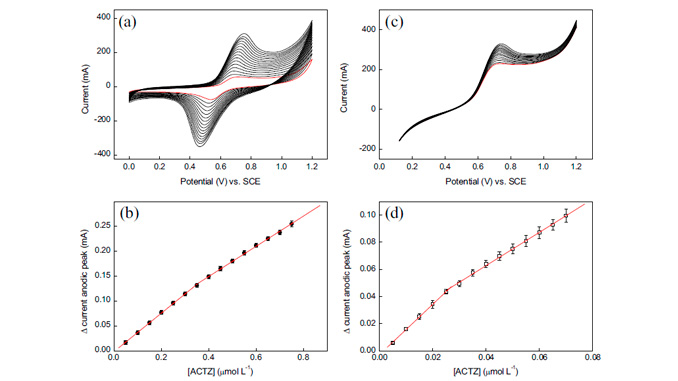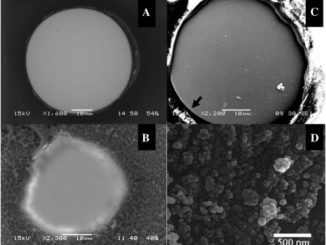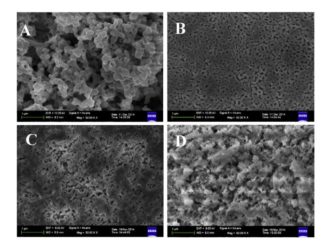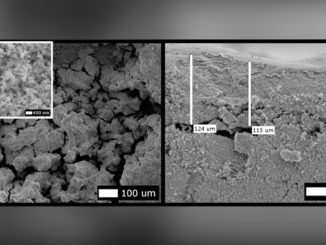
Writers: Wesley B.S. Machini and Marcos F.S. Teixeira
Keywords: Bio-inspired sensor; Biomimetic; Doping analysis
Abstract: A bio-inspired electrochemical sensor using a binuclear oxo-manganese complex was evaluated and applied in the detection of a substance associated with doping in sports: acetazolamide (ACTZ). Investigation was made of the influence of different experimental variables on the electrocatalytic oxidation of ACTZ by the bio-inspired sensor, such as pH and interfering species. The bio-inspired sensor showed the best response in the range from 5.00×10−9 to 7.00×10−8 mol L−1 ACTZ, with a linear range from 5.00×10−9 to 2.50×10−8 mol L−1 and a detection limit of 4.76×10−9 mol L−1. The sensor exhibited characteristics similar to the Michaelis–Menten model of an enzymatic electrode, due to the use of a multinucleated complex of manganese with μ-oxo units, which was able to mimic the properties of enzymes with manganese as a cofactor in their composition, such as Mn-containing oxidase. The determination of ACTZ with the bio-inspired sensor was evaluated using three different synthetic biological fluids (plasma, saliva, and urine), demonstrating its viability for use with real samples. The analysis of ACTZ in real urine samples using the bio-inspired sensor, simulating the method adopted by the World Anti-Doping Agency, which revealed viable, suggesting a new and promising platform to be used in these analysis.




